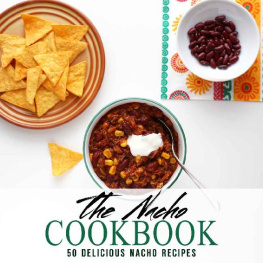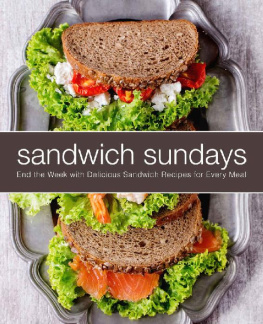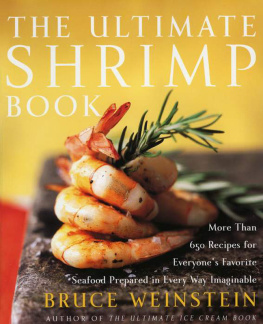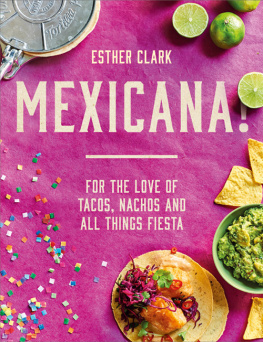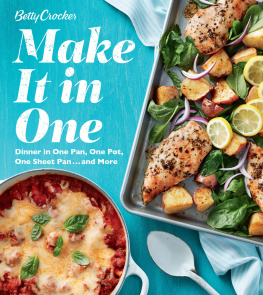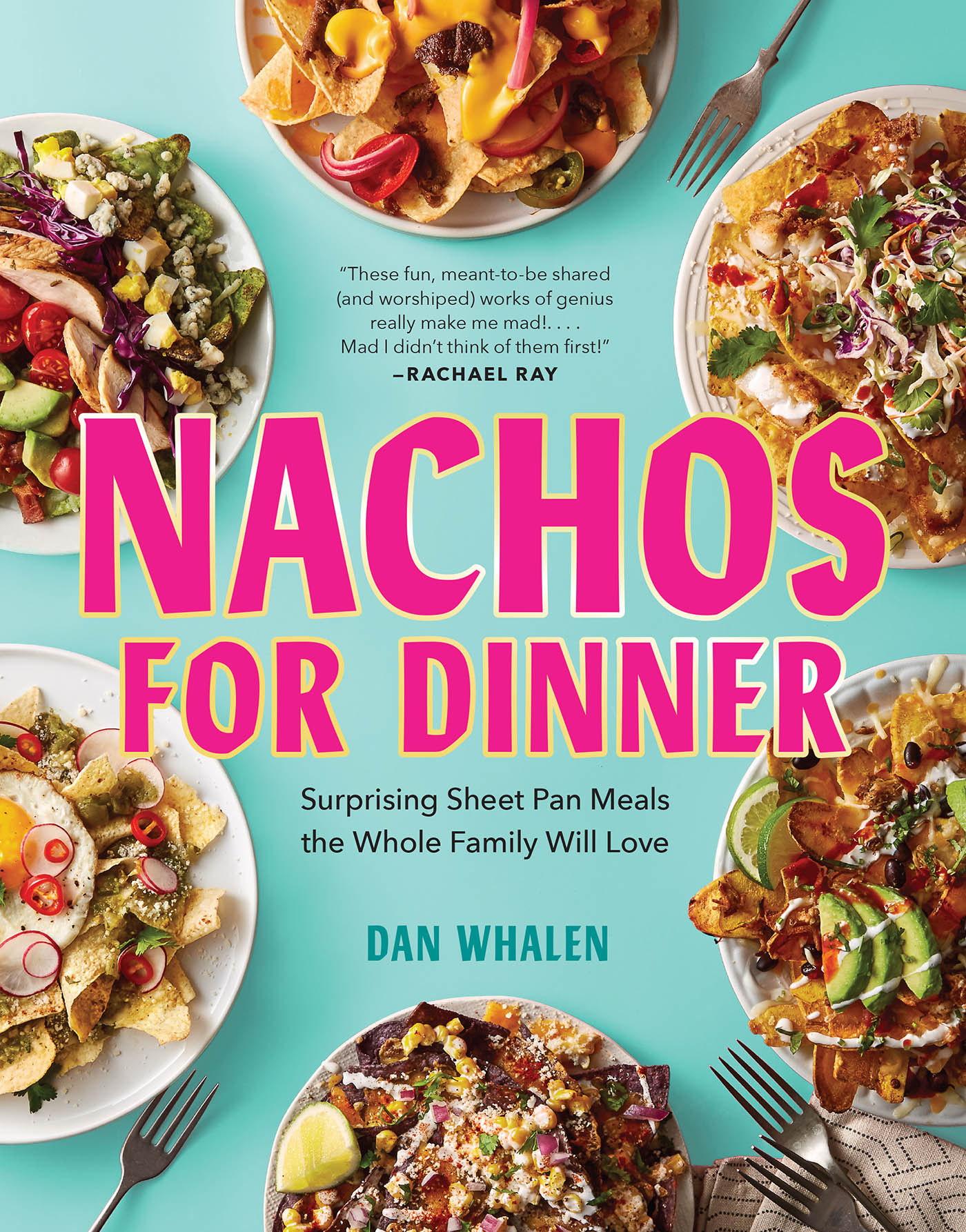
Nachos for Dinner
Surprising Sheet Pan Meals the Whole Family Will Love
Dan Whalen
Workman Publishing
New York
Contents
Chapter 1
Chapter 2
Chapter 3
Chapter 4
Chapter 5
NACHOS! For dinner?!?
H ow many times have you gone out to dinner and gotten nachos as an appetizer and then not been that hungry for your main meal? Or even worsenot gotten nachos thinking it would be too much?! Nachos are one of those appetizers that are usually just a little too big to be a true app, and a little too small and imbalanced to be dinner.
Not anymore! Once I realized that you could have nachos for dinner, it was like the key unlocking the vault of nacho secrets.
You may be wondering: What makes nachos for dinner different from nachos as an appetizer or a bar snack? One word: balance.
I talk a lot about balance in these recipes, whether it is balancing textures, flavors, temperatures, or even colors. But the balance I am referring to here has more to do with balancing the typical requirements of dinnernutrition, satiety, equal representation of the food groupswith the big flavors, varied textures, and fun offered by a plate of nachos. Look, we all love over-the-top loaded nachos, and there are plenty of those in these pages, but when nachos deliver protein and veggies with a little less cheese on the chip (and when chip can mean more than tortillas), they become more acceptable as a dinner instead of being relegated to Snackville.
Using hearty toppings and building nachos around classic dinner dishes, these are recipes you can serve for dinner to family and friends, whether it be for a quick weeknight meal or an epic Sunday night feast. Yes, most of these nachos are a complete meal in and of themselves. But Im not saying this is diet food. They range from pretty healthy (as far as nachos are concerned) to indulgent comfort food.
I tried to incorporate as many veggies as possible and provide vegan swap-outs. I wanted these recipes to be accessible, and to be honest, some of the best nachos I have ever had were vegan (shout-out to Taco Party in Somerville, Massachusetts!).
I thought it would be fun to organize this collection like a traditional cookbook, with nachos based on appetizers, salads, sandwiches, hearty dinners, and more. So youll find everything from spinach artichoke nachos and caprese nachos to cheeseburger nachos and even dessertchos like apple pie nachos! The flavors and ingredients of these dishes range from the classic (including a nod to the first known nacho recipe; see below) to the boundary-pushing ().
A Brief History of Nachos
Before we can talk about nachos, we have to begin with the corn tortilla. Corn tortillas were developed by the Maya thousands of years ago. They soaked hard, inedible corn kernels in limewater (also called pickling lime) to remove the skin and soften the kernels, then ground them into masa flour, which they turned into dough, thus making the creation of the tortilla possible. (It was during the Spanish conquest of the Maya that these corn cakes took their current name, tortillas, meaning little cakes in Spanish.)
But frying the tortillas to make them crispy predates the Spanish invasion. The dish chilaquilescomprised of fried tortillas tossed in a chile saucedates all the way back to the Aztecs; the name itself is from the Aztec Nahuatl language and means chiles and greens. Take a big leap forward to the 1940s, and the modern nacho is bornin Piedras Negras, Coahuila, Mexico, a city on the Rio Grande, right over the US border from the Texas town of Eagle Pass. Eagle Pass was home to a large American army base, Fort Duncan, and because of the bases proximity to the border, many off-duty soldiers and their families would cross the bridge to get their first glimpse of Mexican culture.
As the story goes, Ignacio Anayaknown familiarly as Nachowas working as the matre d of a restaurant called the Victory Club when twelve army wives came in for a snack. It was off hours at the restaurant, so there was no chef on duty at the time. Wanting to welcome his customers regardless of the hour or lack of staff, Nacho went into the kitchen to see what he could make.
He fried up some tortillas, topped them with cheese, put them under the broiler, then added slices of jalapeo. He was debating what to call his creation whenaccording to one accounta guest said, How about Nachos special? Well, the name stuck and the dish was a hit. A recipe for nachos was featured in a community cookbook as early as 1950, and when processed cheese was invented in the 1970s, nachos became a sports stadium favorite.
Today, you can find nachos as an appetizer at most chain restaurants and sports bars across the United States. In the dishs birthplace, the city of Piedras Negras, theres even the annual International Nacho Festival, featuring live music and a worlds biggest nacho contest. In recent years, the fest has drawn more than 25,000 attendees to celebrate Nachos creation and the legend it has become.
My Nacho Journey
As was the case for so many American kids who grew up in the late 1980s and early 90s, nachos were the first dish I ever learned to make by myself. My after-school recipe started with restaurant style chips on a paper plate. (Why are those chips even a thing? They are way too big to eat or dip properly.) I used American cheese (from the deli, not prewrapped singlesIm not an animal!) or Mexican blend if I was lucky and my mom had picked it up at the store. Id put a bunch of cheese on the chipsalways careful not to overdo itand microwave them until the cheese was melted in some areas and burnt, bubbly, and dried out in others. I served my nachos with Pace salsa; I preferred the thin kind when I was younger, later graduating to the thick and chunky stuff.
Fast-forward a few years to my parents kitchen, where Id regularly whip up nachos after a night out. My friends would stumble into the basement while Id drunkenly assemble nachos on a sheet pan, sure I was being too quiet to wake my folks, then creep down the stairs with the hot pan fresh from the oven. Everyone always devoured them. One friend loved them so much that he even mentioned them in his speech at my wedding, crediting nachos as the catalyst for my culinary career.
Years later I was in the right place at the right time and ended up helping a guy open a burrito shop. Many people who know me well might say, Dont you mean the wrong place at the wrong time? But my three years at the burrito shop actually helped me learn so much about working in restaurants and even more about Tex-Mex cuisine. I was resistant to putting nachos on the menu because I wanted the place to operate as a well-oiled burrito machine, but when the owner surprised me with a Tornado oven (like a super-high- powered toaster) specifically for nachos, I had to oblige. The nachos were never a bestseller at the restaurant, but they did have a cult following. Many of the recipes I originally developed for that burrito shop can be found in these pages, like the .
I want to make one thing very clear at the outset: I am a white man writing a book of recipes that riff conceptually (and sometimes materially) on Mexican dishes and also play with ideas derived from culinary traditions from all over the world. I have always tried to explore new flavors and tastes and learn about different cultures through food, which I have been writing about on my blog, The Food in My Beard, since 2008. I strive to appreciate and not appropriate, and I strongly believe that everyone should be able to cook whatever they want. That said, we have been separating the food from the culture for far too long in the food space, and that needs to stop. I am here to celebrate different cultures through food, not erase them; to explore and learn, not to steal or upgrade. So I encourage you to look at the ideas presented in these pages as fun, creative dinners and not as authentic representations of any particular cuisine. If you end up loving the flavors in, say, the , then I hope youll take the next step and dig into cookbooks written by authors from those particular cultures; their varied perspectives and experiences will offer more authentic, well-rounded representations of the culinary traditions that have inspired me here.
Next page


